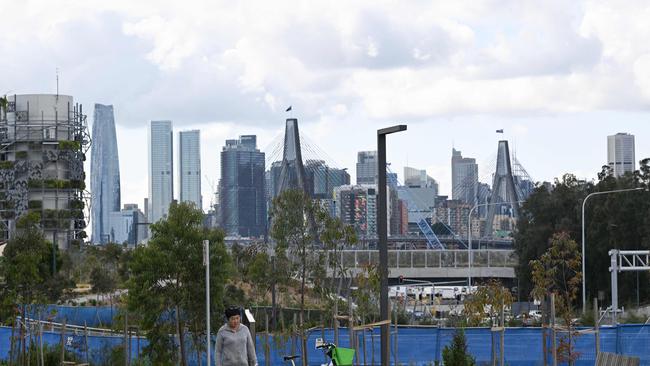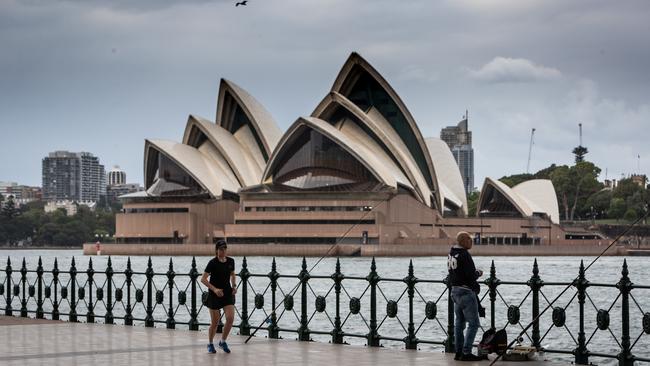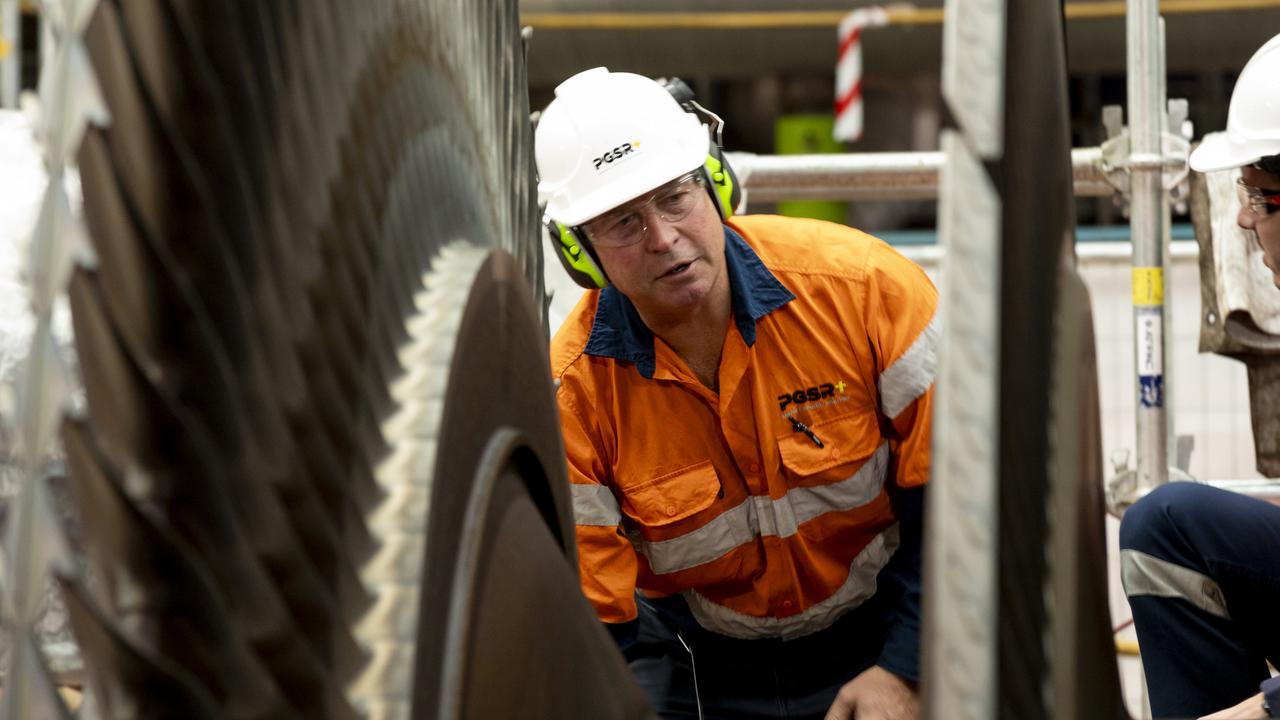How Australian know-how and resources can ride global population explosion
The global population could soar to 11 billion by 2100, bringing enormous opportunities for Australia’s resources and skills, writes Bernard Salt.

Business
Don't miss out on the headlines from Business. Followed categories will be added to My News.
Cities rise and fall in response to perceived economic opportunity and quality of life. This is especially true of Australians cities, largely because of role that is played by immigration to and throughout the Australian continent. The demand for property responds to these drivers.
This raises an interesting question: over what time frame do global cities rise and fall? What is the likely trajectory of Australia’s largest cities? And what are the prospects for Australian property over the balance of the 21st century? These are big questions that to my knowledge have never been seriously addressed.
Rise and fall of world’s biggest cities
The biggest city in the world today is estimated by the UN population division to be greater Tokyo, comprised of 37 million residents, which is roughly the equivalent of Australia (27 million) plus an extra Sydney and Melbourne.
Research conducted by Canadian academics Daniel Hoornweg and Kevin Pope suggests that Tokyo was the world’s third-largest city by 1700 (690,000 pop) but that by 2075 (assuming continued low fertility) the city will contract to 29 million. These data points speak to the concept of the rise and fall of cities over centuries.
Tokyo’s path from its rise to prominence to its eventual subsidence is likely to span four centuries. The megatrends driving the rise and (projected) fall of Tokyo have been the globalisation of trade (creating jobs in Japan’s premier gateway city) and the effect of oral contraceptives in reducing fertility. Japan’s fertility rate has dropped from 3.6 births per woman in 1950 to 1.2 in 2024.
London’s trajectory is sharper, rising from the world’s fifth-largest city in 1700 (with 550,000 people) to the world’s largest city in 1900 with 6.5 million (at a time when Melbourne contained 500,000), but failing to even make the global top 10 by 2000.
Today London has 10 million residents, making it, according to the Hoornweg and Pope study, the world’s 35th largest city. (London currently fits between Hyderabad and Wuhan when measured by population alone.)
London’s meteoric ascendancy in the 19th century was underpinned by the jobs and the opportunities it commanded in its role as the operational headquarters of the British Empire. In the 20th century Tokyo held a similar role, not with colonies but via the globalisation of Japanese corporates.
From London to Tokyo to Lagos
The Hoornweg and Pope study (published in Megacities and Megacity Regions, 2020, EE Publishing) assembles estimates and projections of the world’s largest cities over 600 years from 1500 to 2100.
Their (medium-fertility) projections extend (boldly) beyond the UN population division’s 2050-horizon to the end of this century. At that time, fascinatingly, the world’s largest city is expected to be Nigeria’s capital Lagos with 80 million residents.
Their high projection (fertility above three births per woman) has Lagos at 100 million, while the low projection has Lagos at 61 million at this time.
The number of people living in the world’s largest city increased fivefold between 1800 (Beijing 1.1 million) and 1900 (London 6.5 million). This equation again increased fivefold over the next century to 2000 (Tokyo 35 million).
And in each century urban infrastructure, corporations and social cohesion evolved to enable urban growth at scale – sewerage systems, the concept of a middle class, the idea of global trade, the bold notion of a publicly funded police force.
It is conceivable that Lagos, Dar es Salaam (Tanzania) and Kinshasa (Democratic Republic of the Congo) could be the largest cities on earth in 75 years (see table) – and that these cities at that time could each contain between 60 million and 80 million residents.
After all, humanity managed to transform London’s population from roughly one million in 1800 to roughly six million in 1900, which is a sixfold increase. The transition from peak-city Tokyo at 35 million in 2000 to peak-city Lagos at 80 million in 2100 is roughly a twofold increase. History suggests (or at least implies) that 80 million in a single urban centre is achievable.

Demand for Australian resources
However, the prospect of cities at this scale evolving progressively from the 2020s onwards is daunting and will require (possibly Australian) resources to build the required infrastructure and to deliver the necessary energy.
A world of almost 11 billion in 2100, up from eight billion today, means that global food production must rise by almost 40 per cent from 2024 levels.
It also means that global sea links must be kept open and safe by a bluewater navy, and that food, energy and resources-exporting nations like Australia will have an increasingly important role to play in feeding the world and building cities as the century unfolds. It means that Australian port facilities, especially bulk handling ports in places like Geelong, Fremantle and Port Hedland, must plan for expansion and/or simply for ways of achieving a greater throughput of, say, wheat and other commodities as well as resources like iron ore.
Conurbations on the rise
Interestingly enough, the largest cities on earth since 1500 (for example Beijing with 670,000 population) have acquired wealth, power and high-paying jobs by administering empires from the contemporary equivalent of first-world cities such as London in 1900, New York in 1950 and Tokyo in 2000.
The concept of rich and big cities is likely to be supplanted later this century by the concept of poor and big cities (or, at best, modest-income and big cities). By 2100 the world’s greatest conurbations won’t be Tokyo-Yokohama or the Boston-NewYork-Washington (the so-called ‘‘Bos-Wash’’) corridor, but rather they’re likely to comprise something more modest (in spending per capita terms) like a West African urban coagulation comprising Nigeria’s Lagos, Benin’s Cotonou, Togo’s Lome and Ghana’s Accra.
These four cities and other associated communities could collectively contain 110 million residents within a coastal corridor of 470km (ie Sydney to Coffs Harbour).
Implications for property business
If this is to be the outlook for global cities over the balance of the century then there will be a need to evolve commensurate global property, engineering, finance and city-building administration enterprises (ie consultancies) capable of building road, rail, airport, port and commercial and industrial facilities. And there is no reason why such enterprises could not be leveraged up from businesses operating in Australia today.
After all, it is the first world nation of Australia that is expected to increase from 27 million today to 43 million and possibly more by 2100. And it is Australian cities like Sydney and Melbourne that are expected to rise from five million or so today to, say, nine million by century’s end.

We should not be (predominantly) outsourcing building and construction to foreign-owned businesses. We should be developing corporate assets here in order to create the cities, and the infrastructure, required to meet our needs. And then we should be taking those skills into the developing, burgeoning (African-Indian) world that is sketched for 2100 in the projections of Hoornweg and Pope.
Official projections by the UN show that over the 76 years to 2100 the population of Australia is projected to increase by 59 per cent. This compares with increases of 22 per cent for the US, 35 per cent for Canada, 20 per cent for New Zealand, and 7 per cent for Britain.
The population of Tokyo is expected to drop from 37 million today to 26 million by 2100. On the other hand, London will rise from 10 million today to 12 million by 2100. New York will rise from 19 million today to 30 million by 2100.
Australia stands apart as a place of opportunity for builders, developers, engineers and entrepreneurs in the 21st century. Rightly or wrongly, our moderate fertility rate (1.6 births per woman) and selective immigration at scale over decades will create a place and a nation of can-do optimism.
These are of course projections, and any number of calamities could impact and change the outlook for our nation. But it does seem reasonable, to my way of thinking, that the biggest cities in the future will be those that retain fertility rates at a level generally higher than generally found in the developed world. It also seems reasonable to me that many of the developed world’s biggest cities – London, Paris, New York – should offer generally modest prospects for growth given lower prevailing birthrates in the West.
Conclusion
The challenges for Australia, from a demographic perspective, and taking into account projections that could be recalibrated over time, remain issues like geopolitical risk, the possibility of a breakdown in social cohesion, or perhaps an impact from a climate calamity.
But tantalisingly there is also the prospect that Australia, the ever lucky country, might just navigate its way forward as a place to build a business, to raise a family, to live a life worth living. In fact, there very much seems to be a role for an expanded, innovative property industry in both of these visions of Australia’s future. (I’ve never been to Lagos, but I am now more curious than ever!)
Bernard Salt is founder and executive director of The Demographics Group
More Coverage
Originally published as How Australian know-how and resources can ride global population explosion




